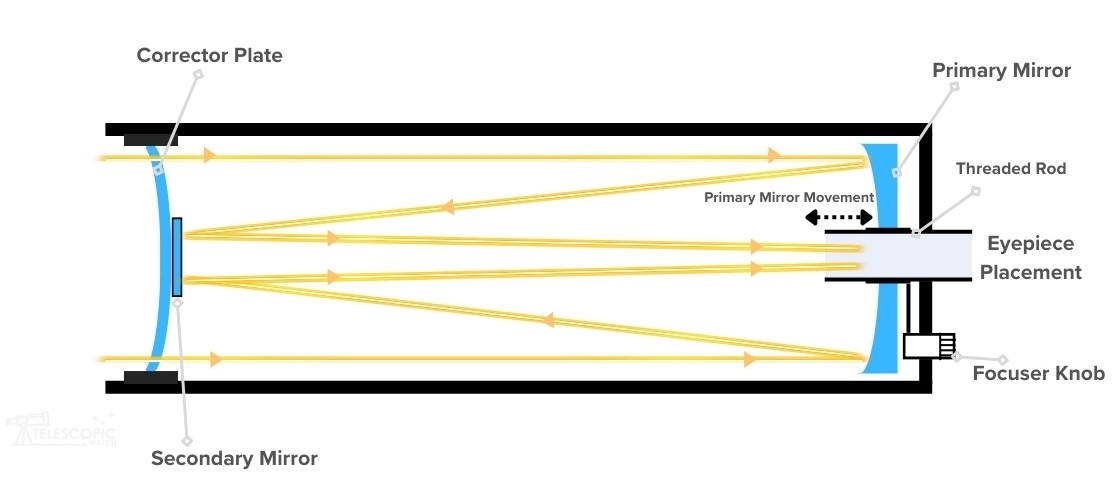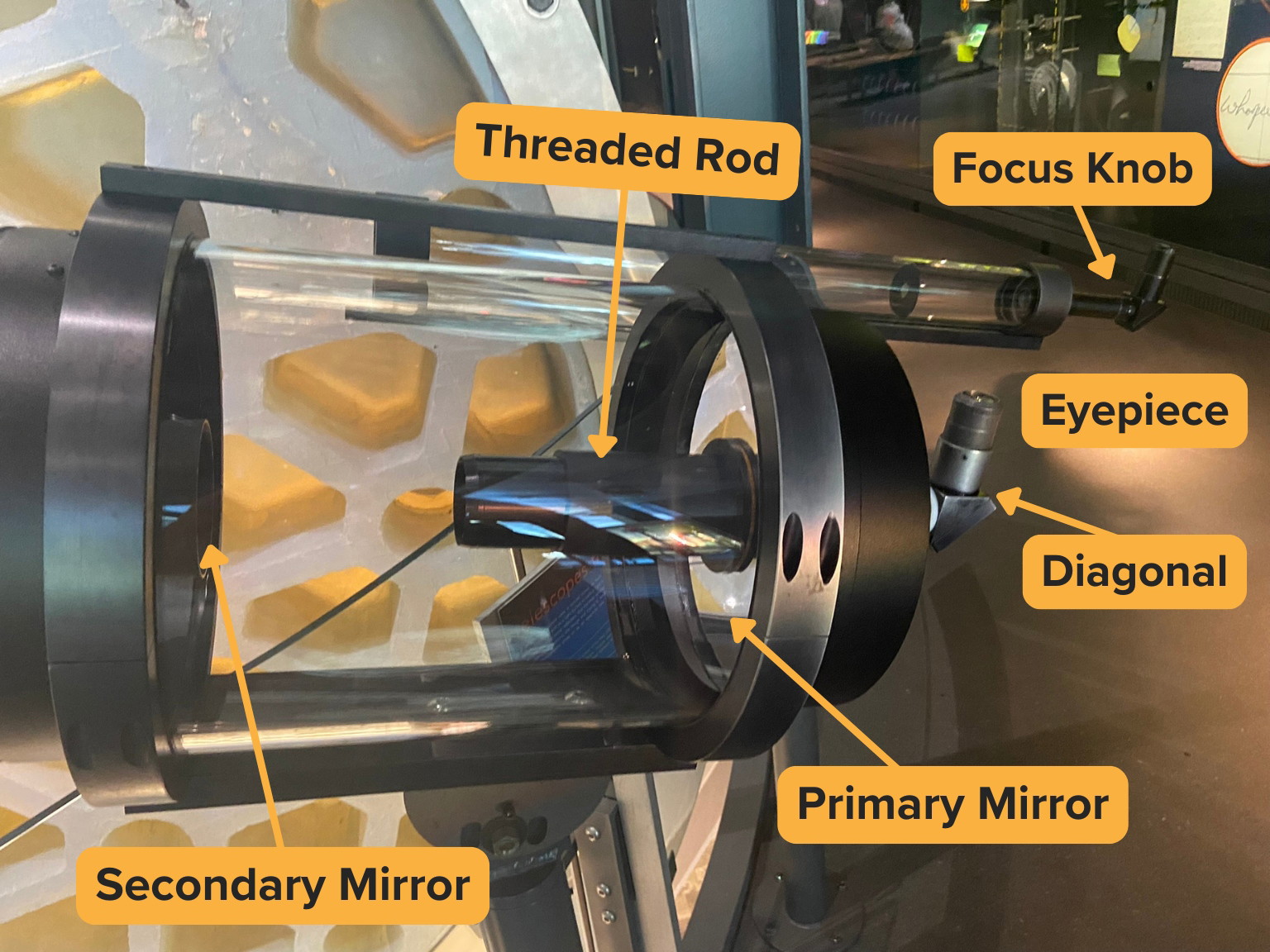Internal Focusers of Catadioptrics

Catadioptric Cassegrain-type telescopes, which combine lenses and mirrors in their optical design, often use an internal focusing mechanism that’s quite distinct from the external focusers found on most refractors and reflectors. This internal mechanism is a key feature of popular telescope designs like the Schmidt-Cassegrain (SCT) and Maksutov-Cassegrain (Mak).
In a typical Cassegrain catadioptric telescope (Schmidt or Maksutov), internal focusing is achieved by moving the primary mirror back and forth, as shown in the diagram below.


The mirror is mounted on a threaded rod connected to the focus knob. When you turn the focus knob, the primary mirror moves along the rod, either toward or away from the secondary mirror. This movement changes the convergence point of the light entering the telescope, allowing for precise focus adjustments without altering the telescope’s external dimensions.
There are a number of pros to this focuser configuration, but quite a few drawbacks.
Pros
- Compact Design: Since the focusing mechanism is internal, there is minimal hardware sticking out the back of the tube. This keeps the tube as physically short as possible and gives me maximum clearance from any fork mount.
- Low Maintenance: Lubricants don’t seep out of the focuser or dry up. Also, dirt doesn’t clog the focusing mechanism nearly as quickly as external focusing devices.
Cons
- Image Shift: A common issue I’ve encountered with this system is image shift. As the mirror moves, it can slightly change its alignment, wobbling on its rod and thus causing the image to appear to rock back and forth. This ends up being problematic, particularly for astrophotography and for close-up planetary observation.
- Mirror Flop: In larger aperture catadioptrics, gravity can cause the mirror to slightly change its angle over a long period of time (e.g., during an astrophotography session), affecting focus and image quality. This is what we call a mirror flop.
- Lack of Precision: It can be hard to make precise focus adjustments when observing at high magnifications with a telescope that has an internal focuser and no additional fine focus knob.
How I Manage Image Shift?
Image shift is almost entirely a unit-to-unit variation, but it can be reduced by carefully lubricating and perhaps re-assembling the focus assembly. Even just racking the focuser back and forth repeatedly helps a lot.
For instance, I have an Explore Scientific 5” Maksutov that arrived with so much image shift that Jupiter appeared to fly out of the field of view even at 80x. After racking the focuser back and forth with the scope in my lap on the couch for a few Seinfeld episodes, it has been practically nonexistent.
How I Manage Mirror Flop?
To address mirror flop during long exposures, many high-end catadioptric telescopes come equipped with mirror locks. These locks secure the primary mirror in place once focus is achieved, preventing any movement and thus maintaining a stable image and precise focus.
However, I’d advise you to use the mirror locks cautiously, as over-tightening can cause mechanical strains or misalignments.
I only use these locks for imaging purposes and never for frequent tightening and loosening during a night of visual observation.
Upgrading to an Aftermarket External Focuser
Besides upgrading the focus knob to a dual-speed version, I’ve also tried screwing aftermarket Crayfords and rack-and-pinion focusers to the back of many catadioptric telescopes.
By using an external focuser, the primary mirror of the SCT, or Mak, remains stationary, minimizing the image shift associated with mirror movement.
However, using an external focuser is a last resort, and I generally don’t recommend it.
External focusers for SCTs and Maksutovs are typically designed as add-ons that attach to the rear cell of the telescope, where the visual back or camera would normally connect. This results in the distance from the telescope’s optical system to the eyepiece or camera increasing, which can affect the use of some accessories as well as the overall performance of the telescope.
If we adjust the internal spacing of the optics to accommodate the external focuser, it can change the spherical aberration correction and the actual focal length of the system.
The use of an external focuser also, almost inevitably, results in vignetting and prevents the use of a focal reducer. So its only benefits are for planetary observing/imaging or other purposes where the telescope’s full field of view is not required. However, the loss of sharpness typically induced by the massive spacing changes inside the telescope may negate even this use case.
This all being said, there are plenty of Cassegrain-type telescopes with no internal focus system and with a conventional focuser attached to the rear instead.
Many Maksutov-Cassegrains made in Russia, for instance, use a fixed Crayford or helical focuser on the back of the telescope. The 152mm Maksutov-Cassegrain offered by Bresser/Explore Scientific and the various R-Cs/Cassegrains sold by GSO have Crayford focusers on the back end as well.
